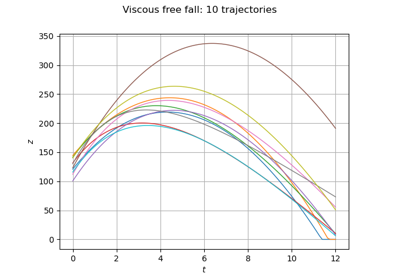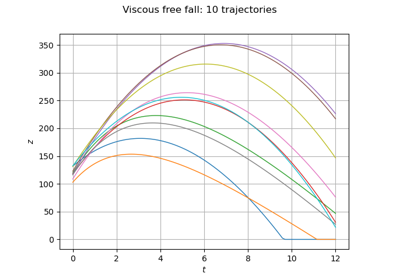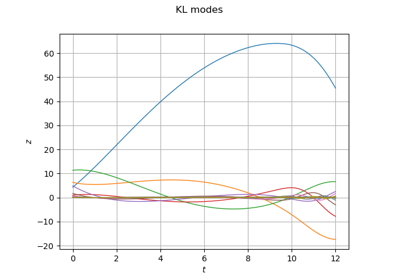A viscous free fall example¶
Introduction¶
We consider an object inside a vertical cylinder which contains a viscous fluid. The fluid generates a drag force which limits the speed of the solid and we assume that the force depends linearily on the object speed:
for any where:
is the speed
,
is the time
,
is the maximum time
,
is the gravitational acceleration
,
is the mass
,
is the linear drag coefficient
.
The previous differential equation has the exact solution:
for any
where:
is the altitude above the surface
,
is the initial altitude
,
is the initial speed (upward)
,
is the limit speed
:
is time caracteristic
:
The stationnary speed limit at infinite time is equal to :
When there is no drag, i.e. when , the trajectory depends quadratically on
:
for any .
Furthermore when the solid touches the ground, we ensure that the altitude remains nonnegative i.e. the final altitude is:
for any .
References¶
Steven C. Chapra. Applied numerical methods with Matlab for engineers and scientists, Third edition. 2012. Chapter 7, “Optimization”, p.182.
Load the use case¶
We can load this model from the use cases module as follows :
>>> from openturns.usecases import viscous_free_fall
>>> # Load the viscous free fall model
>>> fm = viscous_free_fall.ViscousFreeFall()
API documentation¶
See ViscousFreeFall.
 OpenTURNS
OpenTURNS


